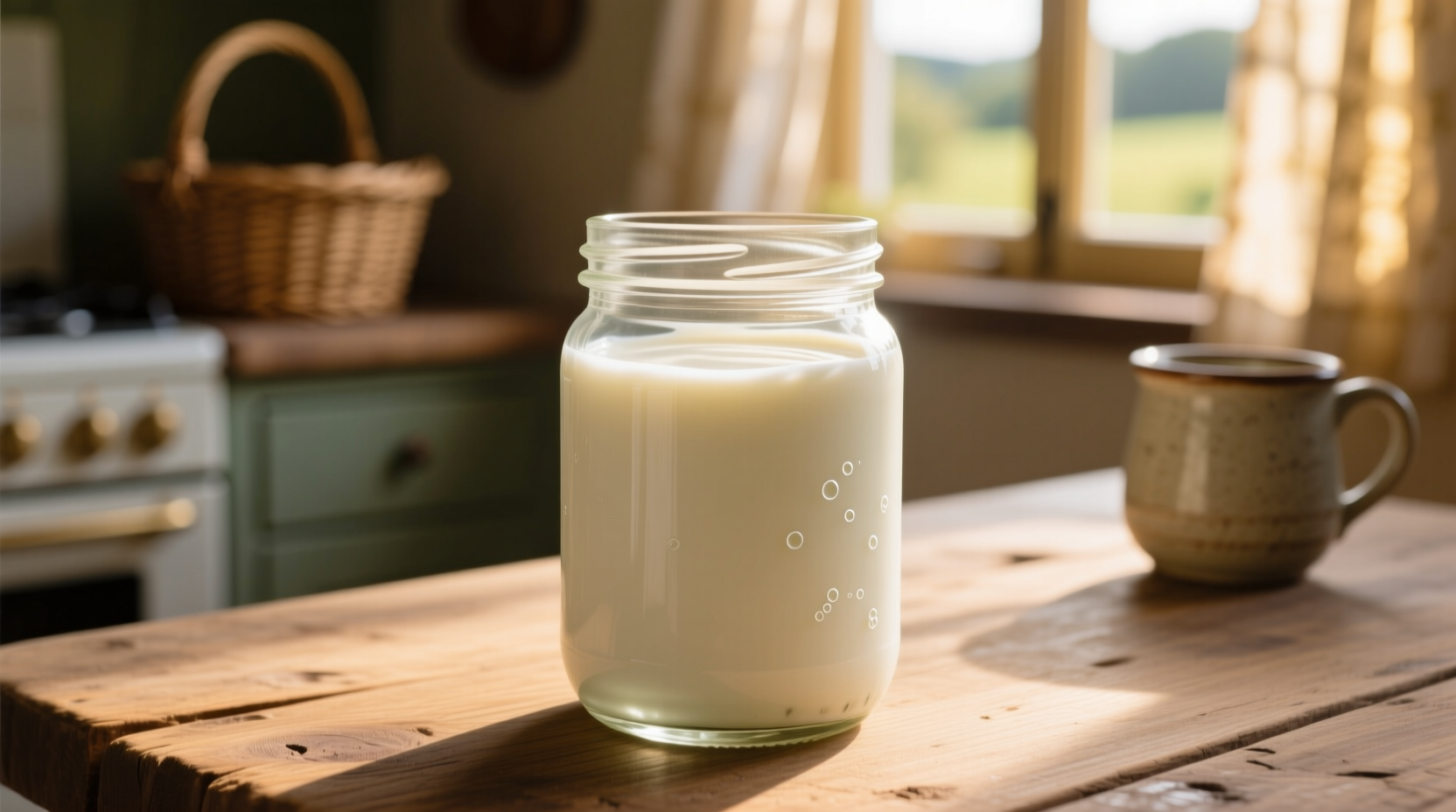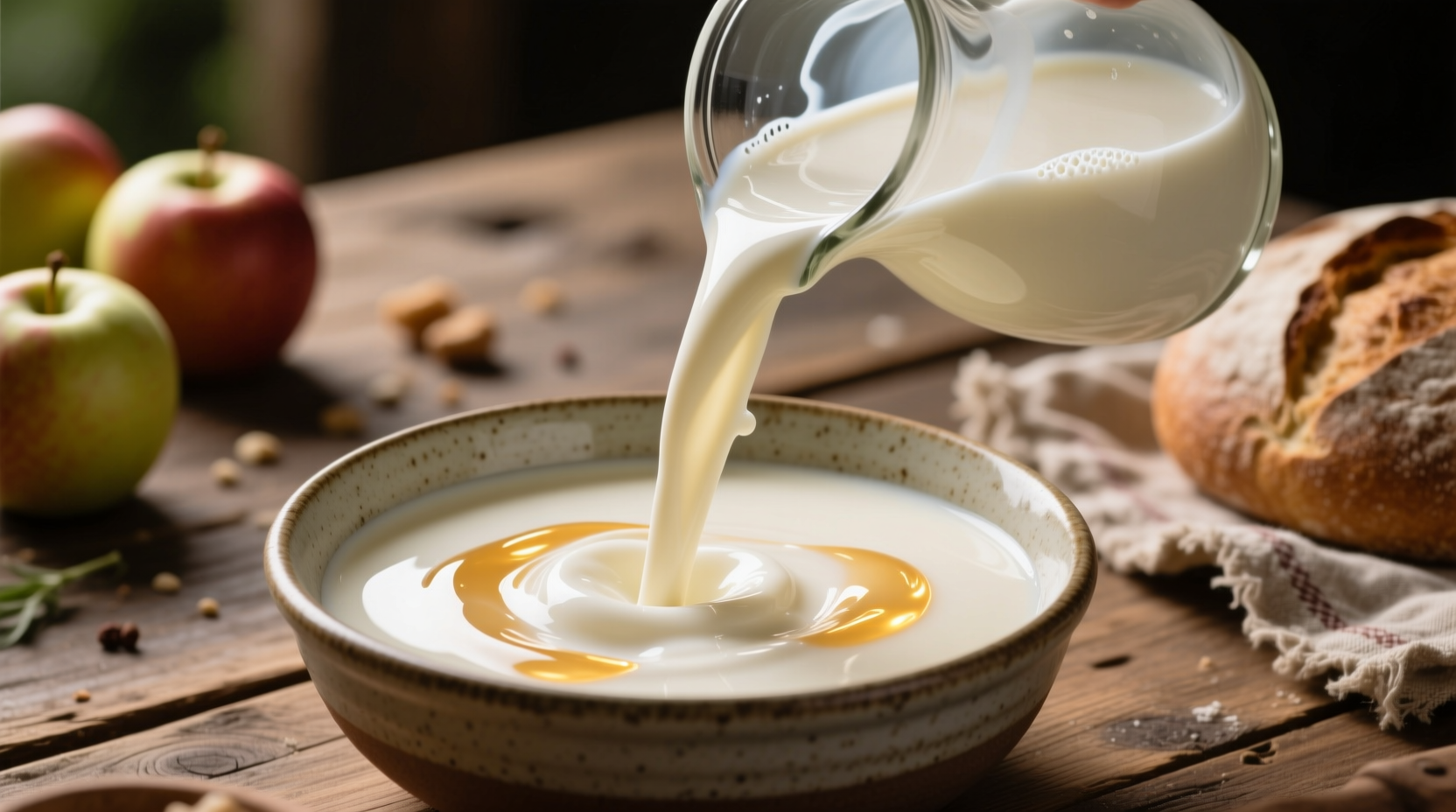Ever wondered what makes raw milk stand out from the supermarket carton? As someone who's analyzed hundreds of dairy samples through sensory training workshops, I can tell you raw milk offers a distinctly different tasting experience that goes beyond simple nutrition. Understanding these sensory differences helps you make informed choices about this increasingly discussed food product.
The Distinctive Flavor Profile of Raw Milk
Raw milk's taste reflects its natural state before heat treatment. Unlike pasteurized milk which has a standardized flavor, raw milk delivers a dynamic sensory experience:
- Natural sweetness - Contains active lactase enzyme that breaks down lactose, creating subtle sweet notes
- Complex undertones - Flavors reflect the animal's diet (grass, hay, grains) with seasonal variations
- Freshness indicators - Properly fresh raw milk has a clean, slightly floral aroma
- Temperature sensitivity - Chilled raw milk expresses different flavor notes than room temperature
According to research from Cornell University's Dairy Science program, the enzymatic activity in raw milk creates over 30 distinct flavor compounds that pasteurization reduces by approximately 60%. This chemical complexity translates to a more nuanced tasting experience that changes throughout the year as animal diets shift with seasons.

Raw Milk vs. Pasteurized: A Sensory Comparison
The most significant differences emerge when comparing raw and pasteurized milk side by side. Pasteurization's heat treatment alters proteins and destroys natural enzymes, creating noticeable changes in both flavor and texture.
| Characteristic | Raw Milk | Pasteurized Milk |
|---|---|---|
| Flavor Complexity | 30+ distinct flavor compounds with seasonal variations | Reduced to 10-12 primary compounds |
| Sweetness Perception | Naturally sweeter due to active lactase enzyme | Consistent but less pronounced sweetness |
| Mouthfeel | Fuller, creamier texture with visible fat separation | Uniform texture with homogenization |
| Aroma Profile | Grassy, floral notes reflecting animal diet | Mild, neutral aroma with cooked notes |
| Temperature Response | Flavor intensifies when chilled | Flavor diminishes when cold |
Factors That Influence Raw Milk's Taste
Several variables affect how raw milk tastes, making each batch unique:
Animal Breed Differences
Jersey cows produce milk with higher butterfat content (around 5%) compared to Holsteins (3.5-4%), resulting in noticeably richer flavor. Goat milk has distinctive grassy notes, while sheep milk offers nuttier characteristics. The USDA's Agricultural Research Service confirms that breed accounts for approximately 30% of flavor variation in raw milk samples.
Diet Impact on Flavor
Animals grazing on fresh pasture create milk with pronounced grassy, floral notes compared to grain-fed counterparts. A University of Wisconsin study found that pasture-fed cows' milk contains higher levels of terpenes and flavonoids that contribute to complex flavor profiles. Seasonal changes in diet create predictable flavor shifts - spring milk often has brighter, fresher notes while winter milk tends toward richer, creamier profiles.
Freshness Timeline
Raw milk's flavor evolves as it ages. Within 24 hours of milking, it expresses its purest, cleanest flavor. Between 48-72 hours, natural fermentation begins creating subtle tangy notes. Beyond 96 hours, flavor changes become more pronounced as beneficial bacteria continue their work. The FDA notes that proper refrigeration below 40°F (4°C) slows this process while maintaining safety parameters.
How to Properly Taste Raw Milk
To fully appreciate raw milk's flavor profile, follow these professional tasting techniques:
- Temperature matters - Chill to 40°F (4°C) to enhance flavor clarity
- Swirl gently - Distribute cream layer without incorporating air
- Smell first - Note grassy, floral, or sweet aromas before tasting
- Sip slowly - Allow milk to coat your palate and note flavor evolution
- Check mouthfeel - Notice the creamy texture and how it lingers
When evaluating freshness, look for consistent color (creamy white to pale yellow) and absence of sour or unpleasant odors. The University of California's dairy extension program emphasizes that properly handled raw milk should never have a strong sour smell - that indicates spoilage rather than natural fermentation.
Safety Considerations and Flavor Connection
While flavor is our focus, understanding safety context helps interpret taste properly. The CDC reports that raw milk carries potential food safety risks that proper handling can mitigate. Fresh, properly stored raw milk should taste clean and sweet - any sharp sourness or off-flavors may indicate bacterial growth beyond the natural fermentation process.
States with regulated raw milk sales require regular testing that ensures safety while preserving flavor integrity. The National Conference on Interstate Milk Shipments provides guidelines that balance safety with maintaining raw milk's distinctive characteristics. When sourced from reputable producers following these protocols, raw milk offers both safety and superior flavor complexity.
Practical Tips for Raw Milk Exploration
If you're considering trying raw milk, these practical suggestions will enhance your experience:
- Start with small quantities to appreciate subtle flavor differences
- Compare different breeds (Jersey vs. Holstein) to understand fat content impact
- Note seasonal variations by purchasing throughout the year
- Store properly in glass containers away from strong odors
- Consume within 7-10 days for optimal flavor and safety
Remember that raw milk's flavor tells a story of the animal's environment and care. Each sip offers a connection to the pasture and season that commercial processing often removes. By understanding these sensory differences, you gain deeper appreciation for dairy in its most natural form.
How does raw milk taste different from organic milk?
Raw milk offers more complex flavor notes than organic pasteurized milk because it retains natural enzymes and bacteria that create additional flavor compounds. Organic milk undergoes pasteurization which alters proteins and reduces flavor complexity, while raw milk maintains its natural taste profile reflecting the animal's diet and environment.
Why does raw milk taste sweeter than regular milk?
Raw milk contains active lactase enzyme that breaks down lactose into simpler sugars, creating natural sweetness. Pasteurization destroys this enzyme, resulting in less pronounced sweetness in regular milk. The intact fat structure in raw milk also enhances sweet perception by carrying flavor compounds more effectively.
Does raw milk taste different based on what animals eat?
Yes, animal diet significantly impacts raw milk flavor. Grass-fed animals produce milk with grassy, floral notes while grain-fed animals yield milk with nuttier, maltier flavors. Seasonal changes in diet create noticeable flavor shifts - spring pasture creates brighter flavors while winter hay feeding produces richer, creamier profiles. This variation is documented in University of Wisconsin dairy science research.
How can I tell if raw milk has gone bad by taste?
Fresh raw milk should taste clean and slightly sweet. Signs of spoilage include strong sourness beyond natural tang, bitter notes, or unpleasant odors. Properly fermenting raw milk develops pleasant tangy notes over several days, but true spoilage creates off-flavors that indicate harmful bacterial growth. Always check for consistent color and absence of curdling.











 浙公网安备
33010002000092号
浙公网安备
33010002000092号 浙B2-20120091-4
浙B2-20120091-4